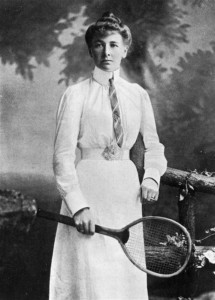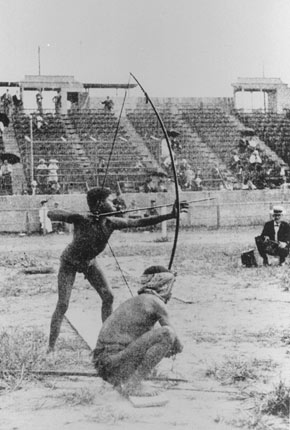Dutch cyclist Marianne Vos has announced that she will be focusing on mountain biking for the coming season, as she aims to win a gold medal in the cross-country in Rio de Janeiro in 2016. Vos has already won gold medals in track cycling (2008) and road cycling (2012), and winning in mountain-biking would a third gold in a third cycling discipline. Has that been done before?
Marianne Vos winning the road race in Londen 2012
Combining cycling disciplines is not rare. Quite a few of today’s road racing stars – where most money is earned – have started out on the track or on a mountain-bike. And many of them have excelled in both, as there’s well over 400 cyclists who have competed in multiple disciplines at the Olympics.
Winning medals in multiple disciplines is much rarer, although there are still 23 Olympians who have achieved this. All of them have done this in two disciplines – so Vos would be the first to do it in three. In all cases, the combination was between track cycling and road racing. Of these 23, 7 have won gold medals in both disciplines. (A full list of all track/road medallists follows below.)
The first time a cyclist won medals in more than one discipline was in 1906, when two Frenchmen, Fernand Vast and Maurice Bardonneau, won medals in both types of events. Women’s cycling was introduced at the Olympics only in 1984, but by 1992 two women had already doubled in cycling disciplines. On the podium of the Barcelona women’s 3,000 m individual pursuit, both silver medallist Kathy Watt and bronze medallist Rebecca Twigg had already won medals in road cycling. Only one cyclist has won multiple medals in multiple disciplines. This is Dutch cyclist Leontien Zijlaard-van Moorsel, who in 2000-2004 collected three golds on the road, while adding one of each color in track cycling.
Although Vos is inexperienced in mountain-biking competition, her prospects of qualifying and winning (a medal) are not that bad. Vos is a 7-time world champion in cyclo-cross, a non-Olympic cycling discipline that features off-road racing with regular width tyres, as opposed to the “fat” MTB tyres.
Marianne Vos riding towards her seventh cyclo-cross world title
But even if Marianne Vos would fail to become the first cyclist to win (gold) medals in three cycling disciplines, she could still set a record by participating. Since the third (mountainbiking) and fourth (BMX) discipline have been added at the Olympics in 1996 and 2008 respectively, there have been several athletes to compete in one of these in addition to another cycling discipline, but so far no cyclist has competed in three.
[table]
Cyclist,NOC,Years,Track Gold, Track Silver, Track Bronze, Road Gold, Road Silver, Road Bronze
Judith Arndt,GER,1996-2012,0,0,1,0,2,0
Maurice Bardonneau,FRA,1906,0,1,0,0,1,0
Chris Boardman,GBR,1992-1996,1,0,0,0,0,1
Jean Van Den Bosch,BEL,1924,0,0,1,0,1,0
Robert Charpentier,FRA,1936,1,0,0,2,0,0
Bernd Dittert,GDR/GER,1988-1992,0,0,1,1,0,0
Jacques Dupont,FRA,1948,1,0,0,0,0,1
Jean Goujon,FRA,1936,1,0,0,1,0,0
Rik Hoevenaers,BEL,1924,0,0,1,0,2,0
Henry Kaltenbrunn,RSA,1920,0,0,1,0,1,0
Guy Lapébie,FRA,1936,1,0,0,1,1,0
Leon Meredith,GBR,1908-1912,1,0,0,0,1,0
Fernand Saivé,BEL,1924,0,0,1,0,1,0
Olga Slyusareva,RUS,2000-2004,1,0,1,0,0,1
Frank Southall,GBR,1928-1932,0,0,1,0,2,0
Rebecca Twigg,USA,1984-1992,0,0,1,0,1,0
Fernand Vast,FRA,1906,0,0,2,1,0,0
Michel Vermeulin,FRA,1956,0,1,0,1,0,0
Marianne Vos,NED,2008-2012,1,0,0,1,0,0
Kathy Watt,AUS,1992,0,1,0,1,0,0
Bradley Wiggins,GBR,2000-2012,3,1,2,1,0,0
Vyacheslav Yekimov,RUS,1988-2004,1,0,0,2,0,0
Leontien Zijlaard-van Moorsel,NED,2000-2004,1,1,1,3,0,0
[/table]
Bradley Wiggins won his fourth Olympic cycling gold – and his first on the road – at the London 2012 Games

